
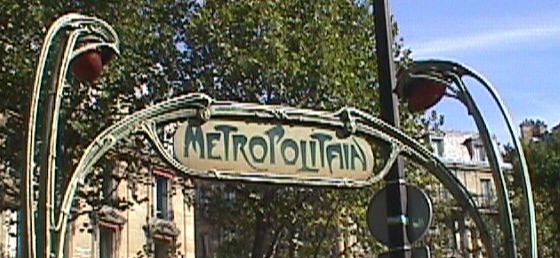
Paris Metro's

All pictures © 1999-2002 by Frédéric Delaitre

Old (1900, background) and new (1931, foreground) Victor Hugo station, Paris Metro, Line 2.
The MF67 stock train on the right leaves for Porte Dauphine terminus.

Location:
Under the Place Victor Hugo, 16th arrondissement, Paris, France.
Timespan: 1900 - 1931
Timeline:
1900 - December 13th Opening of the line 2 between Porte Dauphine and Etoile.
Victor Hugo is the only intermediate station.
1931 - Closure of the original station replaced by a new one, in straight alignment
under the avenue Victor Hugo towards Etoile.

Not exactly a "lost" subway, but the remains of one of the first underground
station in Paris, with interesting features. Curiously, this station is constantly
overlooked in the lists of closed stations in Paris Metro (though I agree it should
be better classified as a "relocated" station).
Victor Hugo station was one of the two peculiar spots of the primitive Metro system
(the other one being the Bastille station, Line 1, with 36 meters curves to cross the Canal
Saint-Martin). Original station was on a tight, 75 meters radius, curve under the Place
Victor Hugo in Paris.
In 1930, the CMP (Compagnie du Métropolitain Parisien) wanted to introduce on Line 2 new
standard 14.250m long bogie stock in replacement of the 1903 bogie stock, measuring
10,230m, and due to be phased out. The sharp curve at Victor Hugo would have caused a large gap between the new stock and the
platform. Thus, the CMP decided to rebuilt the station in alignment under the Avenue Victor Hugo
towards Place de l'Etoile. The original entrance and access were reused in the new scheme, but the
platforms had to be abandoned.
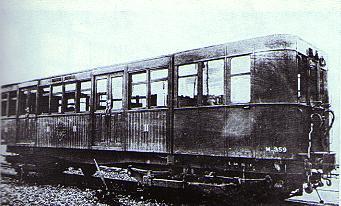
300 series motor car, 10.230 meters long, (1904/1905) in use on line 2 until 1930
due to the sharp curve of Victor Hugo station.
In 1999, the former platform towards Porte Dauphine is occupied by RATP storages and offices.
Platform towards Place de la Nation is empty, except for storage of track parts (rails and
sleepers) from time to time.

The 1900 part of Victor Hugo station. The left platform is unused while the right one is
occupied by RATP storage and offices. In the background, the tunnel toward Porte Dauphine.
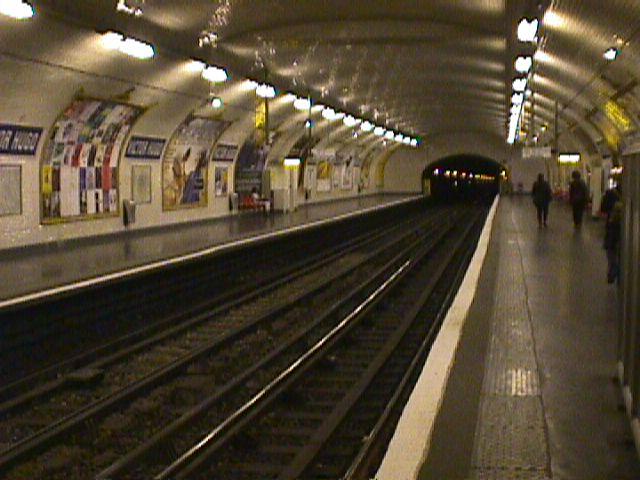
The 1931 station under the avenue Victor Hugo, looking towards Etoile.
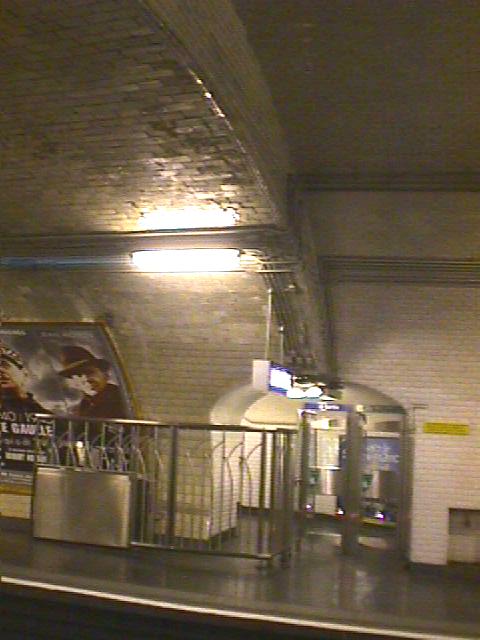
The junction between the 1900 station (left) and the 1931 station (right). A new exit
was built in 1931 for the platform towards Porte Dauphine. 1900 exit is used to access
RATP offices installed on 1900 platform towards Porte Dauphine.

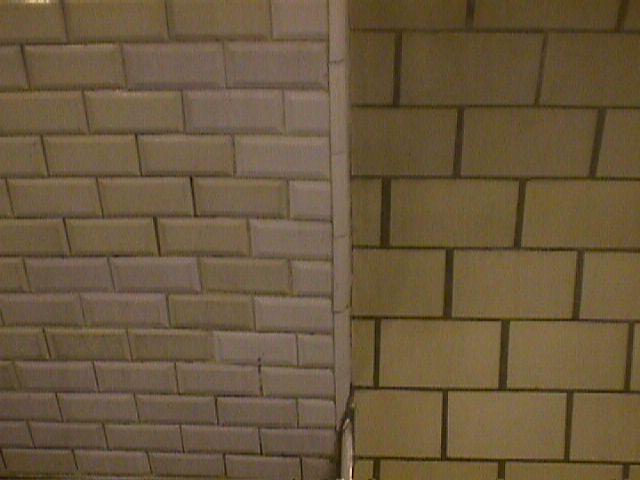
1900 tiles (right) and 1931 standard bevelled tiles (left) coexists
within the station.
Walls of Victor Hugo 1900 station are still covered with original and rare
stone varnished tiles (to be found only here and in neighbouring Porte Dauphine
terminus station). 1931 rebuilt station used the standard bevelled white tiles.

The tiles of the 1931 were manufactured by BOULENGER, a company based
in Choisy-le-Roi, in the south-eastern suburbs of Paris. Bevelled tiles were
used since 1903 in order to enhance the lighting of the station. At this time,
incandescent lighting was providing a mere 5 lux lighting intensity at platform level
(fluorescent tubes in use since the 50s fares a better 250 lux).
New developments - Victor Hugo's station rehabilitation (July-September 2002):
The RATP (Paris Metro Authority) has decided to carry on extensive rehabilitation works at Victor Hugo
station from July 15th till September 17th, 2002, leading to the complete closure of the premises.
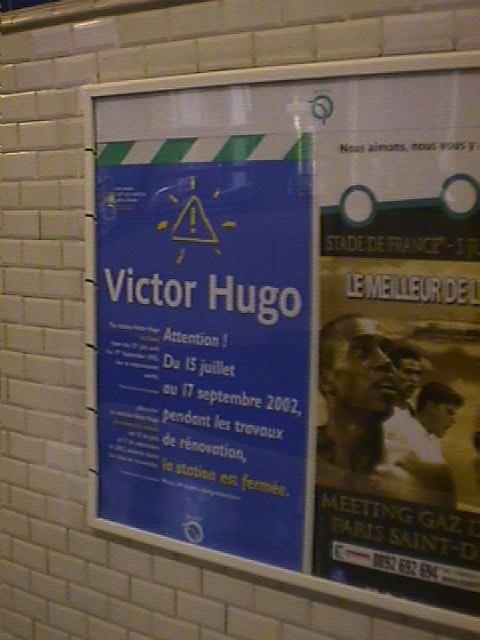
Poster announcing the closure for two months of the station
A letter was sent to all the neighbourhood giving some additional details. It is worthwile to note that
complete closure of stations for refurbishment corresponds to RATP new policy. In the past, works were simply
carried out at night, as it is still the case for correspondance station (e.g. Péreire on Line 3) or
terminus station (e.g. Pont de Levallois on the same line 3), also part of this refurbishment program.
In the case of Victor Hugo station, this decision will cause great inconvenience to users.
Etoile station on line 2 is 800 meters from the Place Victor Hugo, and
the Porte Dauphine terminus is 500 meters from the same. In addition, bus 52 between place Victor Hugo is
usually overcrowded and unreliable.

Poster announcing the closure for two months of the station
[Translation from french:]
Paris, May 25th, 2002.
"Dear Sir/Madam:
"Since 1999, the RATP has launched an extensive program of refurbishment of the metro. In four years,
in nearly 200 stations, the lighting will be modernised, the tiling will be renovated and new direction signs
will be put into place.
"As part of this new program, called "Renewing the Metro", your station Victor Hugo will benefit from important and
simultaneous works that will imply a complete closure for security and efficiency reasons.
"Thus, the station will be closed from July 15th till September 17th, 2002. However, access to line 2 will
still be possible by the stations: "Porte Dauphine" or "Charles de Gaulle - Etoile".
"During this period, access, booking hall, corridors will see a complete modernisation of the lighting, fittings of
new luminous signs, brand new tiling and new direction signs substituted to old ones.
"Please accept our apologies for the inconvenience and we thank you for your understanding.
(Signed) Jean-Pierre Bonningue, Project Manager.
[End of translation]
Apart from the inconvenience caused to the numerous users of this station, these major works
will probably imply the disappearance of memorabilia directly related to the early years of
Paris Metro. The original varnished tiles of the 1900 station that survived two World Wars and the
1931 station rebuilding will probably disappear.
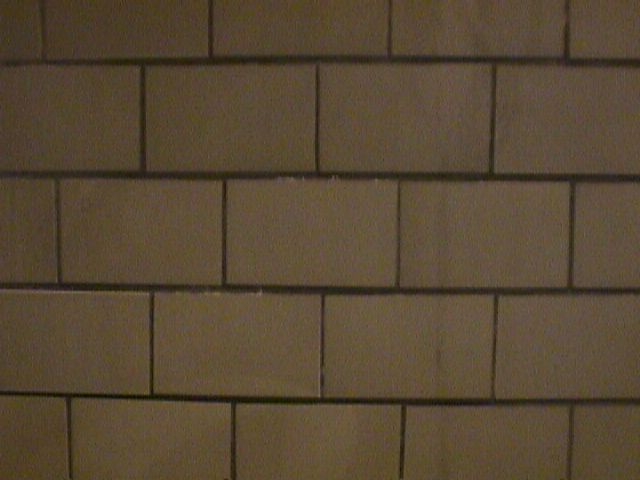
Original 1900 varnished unbeveled tiles. Dimensions: 190mm by 130mm
According to the ADEMAS Society, the CMP, the private company in charge of the Paris Metro in 1900,
proceed with different tile tests in Porte Dauphine (line 2), Victor Hugo (line 2) and George V
(line 1) - before selecting of what is now the standard beveled Metro tile. The only remnants
of these attempts may be found in Porte Dauphine and Victor Hugo station, for how long?
Another probable victim of the refurbishment works is this interesting 1930's standard advertisement
frame casted into the original 1900 tiles (end of platform in Porte Dauphine direction):

1930 advertising frame casted into original 1900 tiles.
Finally, what will happen to the Victor Hugo permanent (and rather small) exhibition on the "Nation"
platform:
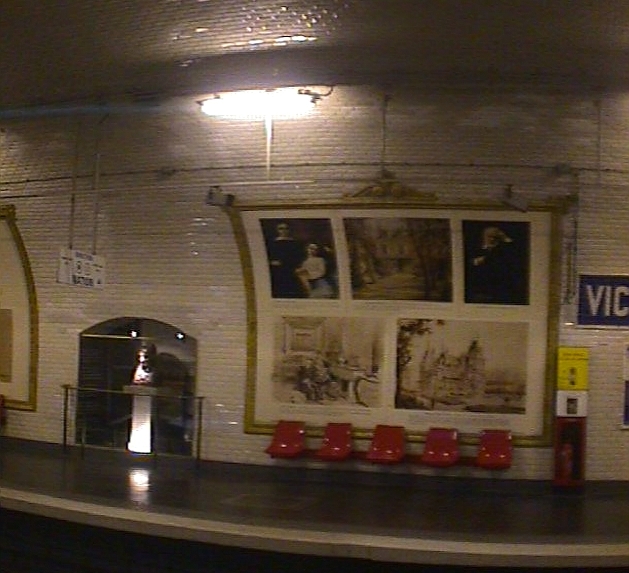
Victor Hugo exhibition on platform "Nation". On the wall, reproduction of contemporary
pictures and Hugo's drawings.

None found about Victor Hugo 1900 station.
Other sites related to Paris Metro:
http://www.ratp.fr: - RATP (Paris Metro Authority) Official Web Site.
http://www.100anslemetro.com - Paris Metro 100th anniversary official web site.
http://www.metropolitain.org - Song Phanekam's wonderful Metro site.
http://www.teaser.fr/~aquintanar - André Quintanar
site on Paris Metro disused stations and the Petite Ceinture railway.

Notre Metro, by Jean Robert, 1983 edition (in french).
Le Patrimoine de la RATP, Flohic Editions, 1996 (in french).
Return to Home Page.
Created: 99/09/14
Last modified: 02/07/07






















